► McLaren Senna reviewed on track
► Flat out at Estoril circuit in Portugal
► 789bhp, 590lb ft, £750,000, 500 to be built
If you’re going to name a car after Ayrton Senna, it had better be pretty good on a track. Happily, the McLaren Senna is as superlative to drive on a circuit as you’d hope.
A brief test in an early prototype at Silverstone hinted that the Senna was pretty special to drive, but now that we’ve tested the finished product at Estoril we know for sure.
Read on for the full McLaren Senna track test review.
A recap: what is the McLaren Senna?
The latest model in McLaren’s ‘Ultimate Series’, which started with the P1 hybrid hypercar. The next will be a three-seat grand tourer codenamed BP23 – billed as McLaren’s ‘ultimate road car.’ Meanwhile this, the Senna, is the ‘ultimate track car.’
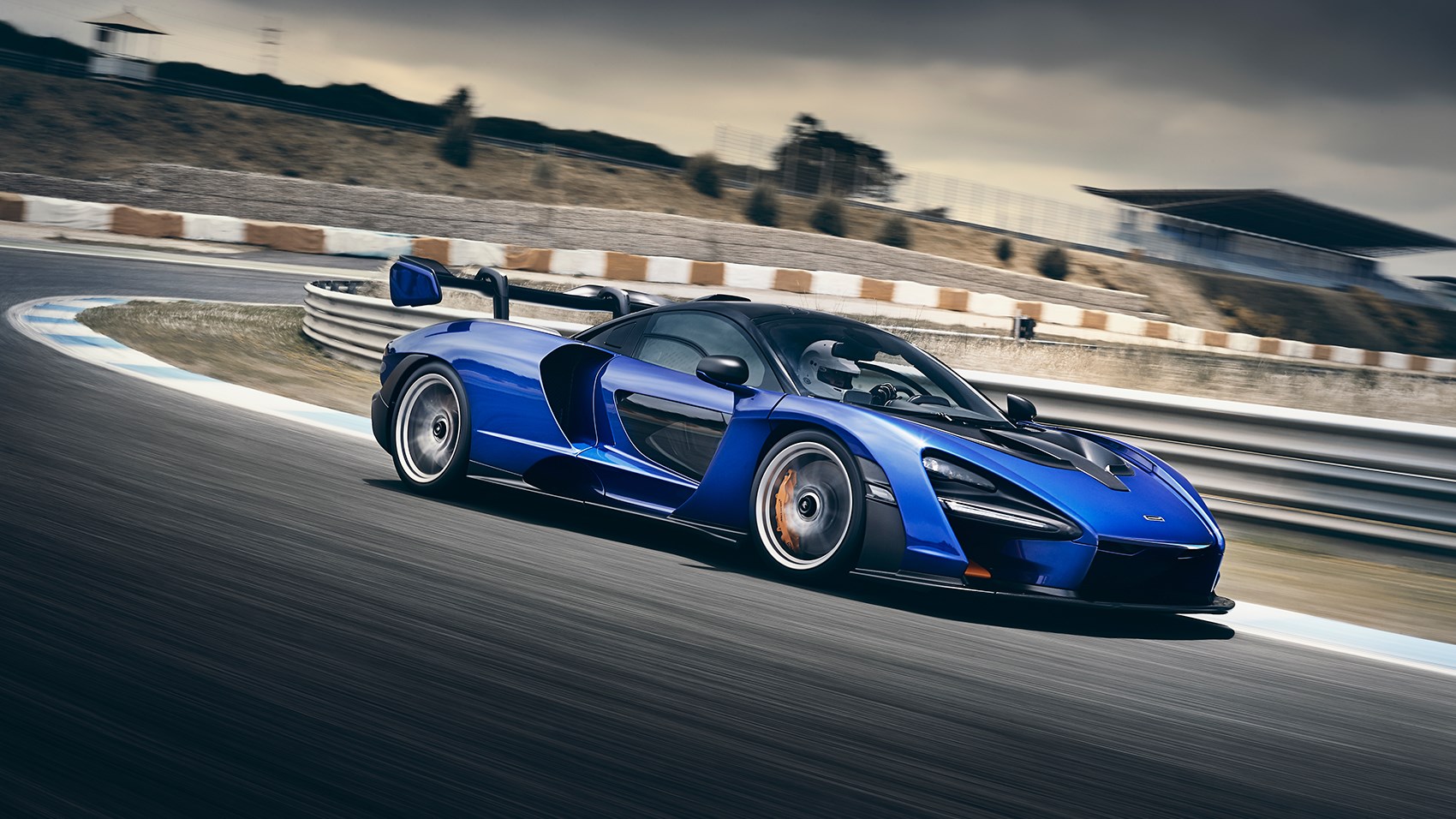
While it’s fully road-legal and engineered to get over speedbumps and into parking spaces, its natural habitat is a race circuit. This is a car with a one-track mind, and an obsession with getting around said track as quickly as possible.
Production is limited to 500 cars, and all have already sold out, despite a £750k (plus taxes) asking price. A portion of the proceeds goes to the Ayrton Senna Foundation, hence the shared name with the F1 hero who raced for McLaren from 1988 to 1993.
Most customers have taken advantage of McLaren’s MSO customisation programme, some of them adding six figures’ worth of options on top of the Senna’s basic price…
Unlike the P1, the Senna is not a hybrid. It’s powered solely by a 4.0-litre evolution of the V8 you’ll also find in the 720S, but it’s had a bit more than a remap. A long and expensive list of internal upgrades has resulted in a nicely symmetrical 800 metric horsepower and 800Nm of torque (789bhp and 590lb ft in old money), to go with 800kg of downforce at 155mph in Track mode. Serious figures for a racing car, let alone something with numberplates and a V5C. Especially given that the Senna weighs less than 1200kg without fluids (add around 100kg for a more realistic kerbweight).
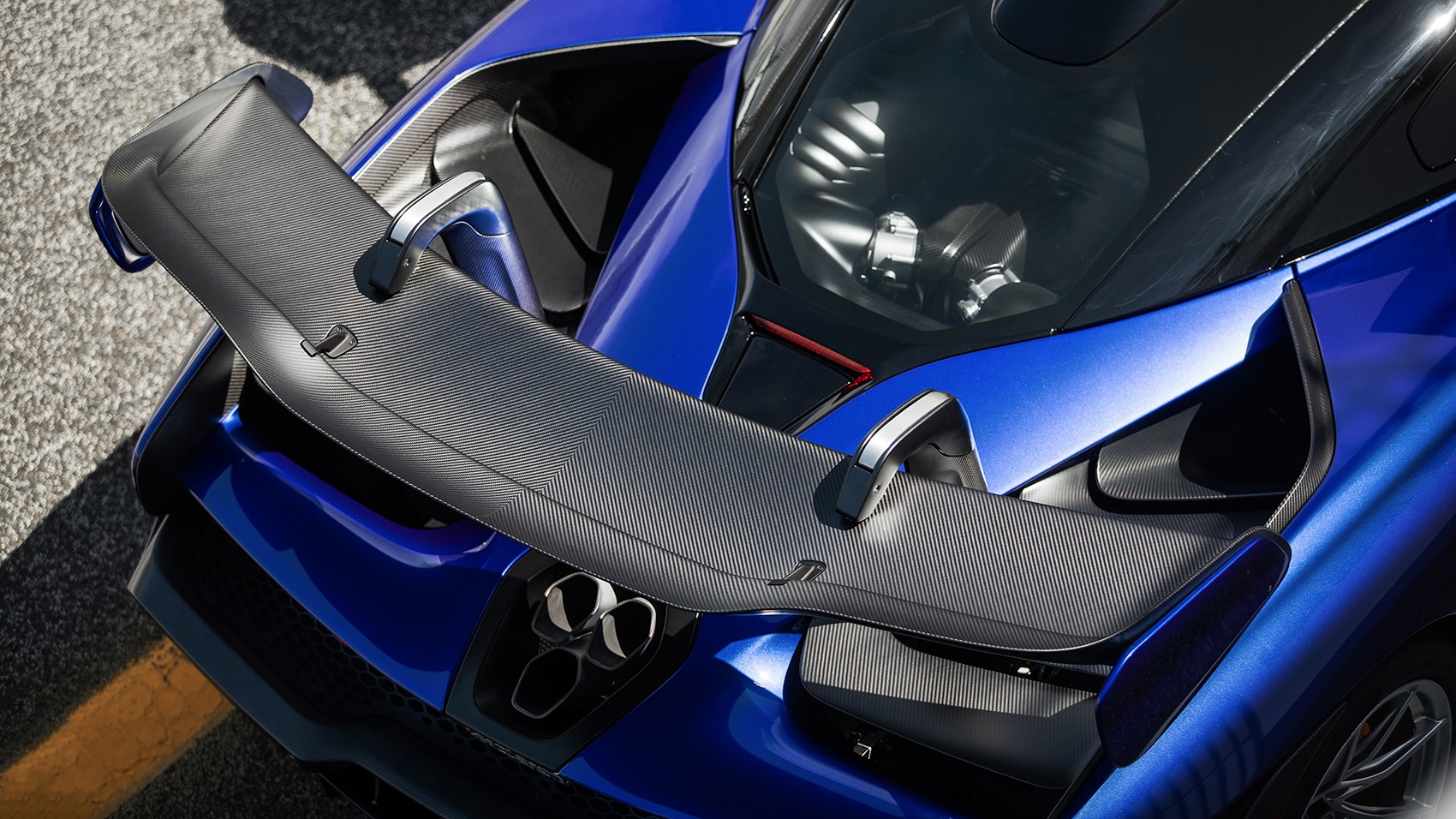
What’s it like up close?
The Senna copped a bit of flack for its more brutal than beautiful styling when pictures were first released, but it’s a car you have to see in person to properly appreciate. Its ruthless function-over-form shape is captivating, and full of menacing presence.
Walk around it in three dimensions and you’ll appreciate the intricacies of its surfaces, in particular the layered slats below the rear wing (and the sheer scale of said wing), and just how low, wide and alien it appears, like a mutant GT racing car.
The cabin is shaped like a teardrop, with the wheels pushed out into pods at each corner and every surface governed by the need to divert cold air in, hot air out, and the airflow in general over or under the Senna to create the best possible compromise between drag and downforce.
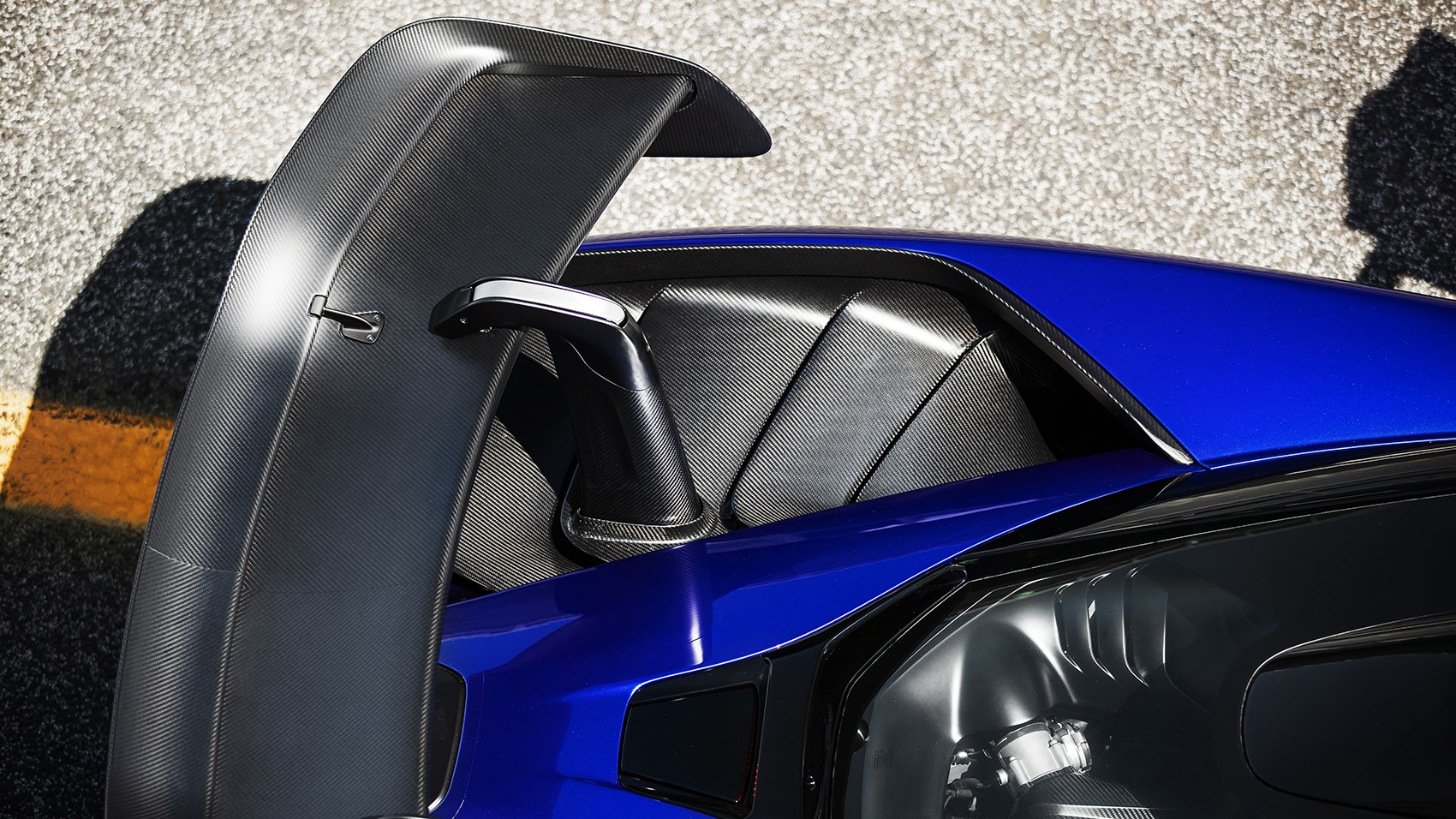
The gigantic rear wing is capable of 500kg of downforce on its own (yet weighs less than 4.9kg), and repositions itself actively on the fly, in tandem with the moving front aero blades (shaped almost like a three-element wing) to make the car slipperier on the straights, stickier in braking zones and corners, and adjust the car’s overall aero balance front to rear to keep it as planted as possible. McLaren could have acquired yet more downforce still, but the tyres would have needed to be completely re-engineered to cope with the pressure.
Time to climb aboard, the aperture under the butterfly door and over the structural sill easier to clamber through than you might expect. You sit low, in sculptured carbonfibre shells that are genuinely comfortable, supporting your back and shoulders in all the right places.
Each seat weighs only 3.3kg. Neatly, the D,N,R gear selector controls slide together with the seat, and much of the other switchgear has been moved to a site in the roof above the rear-view mirror. Minimum clutter, minimum distraction. Your hands grasp a slim, neatly contoured carbon steering wheel free from buttons.
Even the door-release handles now live in the roof – something I’ll later forget when I’ve finished my drive, grasping around in vain at the driver’s door’s inner surface. There are no interior panels – what you see is the door itself, made from beautifully finished carbonfibre, and in this case the optional glass sections below the race-style short-drop windows, to enhance visibility and sensation of speed. As if this car needs to feel any faster.
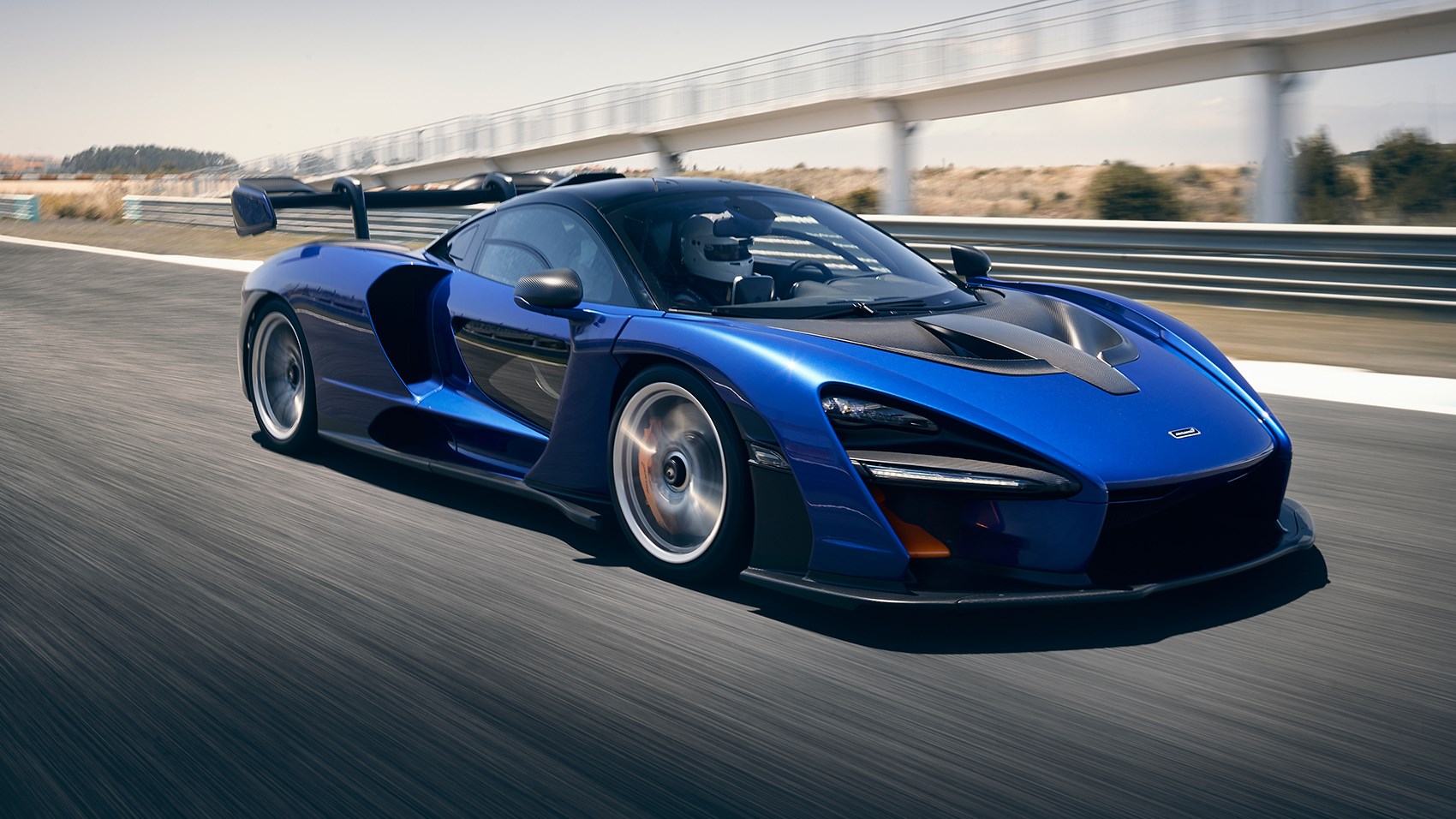
So – the drive
The Senna’s launch takes place at Estoril, the scene of Ayrton Senna’s first Grand Prix win. A fast, challenging circuit with a lovely rhythm to it, it’s notable for a toweringly fast pit straight and some serious braking zones, to show off the Senna’s serious stoppers – each composite brake disc currently takes seven months to manufacture.
Sitting in the pitlane at Estoril in full race gear, optional full six-point harness over HANS device clamping your shoulders into the seat shell, push the brake pedal – relatively firmly, as the brakes are still warm from fast laps – and thumb the starter button.
The V8 sounds purposeful, broadly similar to a 720S but slightly harder-edged. Now press another button, this time in the roof, to put the Senna in Track mode. The instrument panel tilts through 90 degrees into a minimal display for revs, speed and bare-essentials and winks up a percentage countdown as the hydraulically controlled suspension sinks to its lowest possible setting, increasing downforce by as much as 40%.
Setting off is undramatic – click a paddle, foot off the brake, tickle the throttle (there’s no creep mode), and you’re underway. Rolling down the pitlane, the most remarkable thing is how unremarkable the Senna feels. It’s like a normal car – or a normal McLaren, at least.
That picture quickly changes once you’re on the circuit.

Acceleration is as startling as you’d expect from a carbon-chassis car with 789bhp, but it’s the way the Senna stops that makes it an experience unlike any road car I’ve driven. Hit the brakes hard and the Senna wipes off speed like it’s just driven into a giant invisible baseball mitt. But it’s not just the braking power that’s impressive, it’s the way you can take the brakes off, too. There’s an incredibly fine degree of feel through the short-travel pedal (very little movement, just like a race brake), enabling you to blend the brakes off early, or trail them precisely into a corner to control the weight over the front tyres (and front wings hidden under the nose) as required.
A lap or two in, at the end of Estoril’s monster start straight, my eyes flicker from the speed readout to the braking point like a strobe light, seeing something around 180mph before hitting the brakes as late as I dare and as hard as I can. What’s really uncanny is the way the Senna stays rock-solid under braking. Compared with the 720S we’ve just climbed from for sighting laps, which itself is a phenomenally capable car on a circuit, the Senna simply doesn’t budge, staying absolutely true no matter how many kilos of pressure you pile into the brake pedal.
Most road cars, even the 720S, get up on their tread blocks and start to shimmy under heavy braking, but the Senna’s active aero, which trims the angle of the gigantic rear wing and front flaps within the nose to control the aerodynamic balance front to rear, squashes it into the tarmac like a blob of chewing gum under your shoe.
It goes well and stops well, then. What about corners?
More good news. The steering feels delicate and precise, and so good is the feedback through wheel and chassis that it’s easy to rotate the car using weight transfer too. One the nose is pivoted into the corner, the ESP in Race Mode is so unobtrusive that it allows a decent angle of power oversteer, enabling the driver to steer the Senna on the throttle on the way out of slow corners. That’s helped by the V8’s precise, notably un-laggy torque and power delivery. Driving an 800bhp car shouldn’t be this unintimidating.
Yet the Senna is incredibly friendly, holding your hand, giving you confidence. It’s a car you’d want to keep lapping in, pushing the braking points back, never stopping improving. Which is the car’s entire mission in a nutshell.
It’s natural balance in its standard setup is toward understeer, which isn’t a bad thing. When the nose begins to push wide, a gentle lift of the throttle brings it predictably and progressively into line, giving you a nice stable baseline to work from. And there’s plenty of adjustability in the suspension for brave drivers to make the Senna as twitchy and ‘on the nose’ as they like.
The ultimate limiting factor is the tyres. The Senna uses road tyres, and they’re particularly brilliant ones, bespoke Pirelli P-Zero Corsas tuned specifically to the car. They do a fantastic job, particularly under braking, and their tread-block movement becomes an extra element of the steering’s feel, letting you know exactly what’s going on.
But they are road tyres nonetheless, and you can’t help but wonder how the Senna would feel with a set of slicks bolted on. Some lucky customers will know in the near future, with a track-only Senna GTR is on the way. Given that the Senna is already considerably quicker than a slick-shod GT3 racing car on its standard road tyres, that’s going to be quite a thing.

There must be a downside?
We experienced electronic problems twice during our time on track, with the suspension control system experiencing confused sensor messages and putting the car into limp mode, which was cured with a reset back in the pits. The reason cited was that the cars had been atypically driven hard on track for nearly three days, and hadn’t been through a typical road cycle, confusing the system as a result. It’s still a new car after all at the very end of its development cycle at the dawn of production – McLaren will sort it for customer cars, no doubt.
How fast is the McLaren Senna?
Top speed is 211mph and 0-62mph takes 2.8sec, although it’s the 0-124 mph in 6.8sec that really puts things in perspective.
Give me some tech highlights
The dampers are interconnected hydraulically, both front to rear and side to side, and a hydraulic automatic stiffness function called ‘K-damper’ performs a similar function to an anti-roll bar. McLaren’s ‘Race Active Chassis Control II’ (RCC II to its friends) electronic system controls it all.
The suspension adapts automatically on the road, and can also be configured on a similar ‘Active’ panel to other models in the McLaren range, with Comfort, Sport and Track modes. The full limbo Race mode is accessed via a separate overhead, top-shelf control.
Although the engine is based upon the same 4.0-litre twin-turbo V8 design that powers the rest of the current McLaren Auto range, it’s no less than 2kg lighter than the powerplant in the 720S, following a thorough overhaul of its internals. The carbonfibre plenum chamber is a work of art in itself, with a higher-quality finish than that you’d find in the interior trim of many high-end road cars.
Weight saving has been ruthless throughout. One door weighs 9.88kg, compared with 19kg for a 720S door, one front wing (as in fender, not spoiler) weighs 0.66kg to a 720S’s 2.2kg. Even the fasteners have downsized, from M6 to M5 where possible, because they’re 33% lighter.
The majority of customers have opted for the transparent door panels, which make the cabin feel surprisingly light and airy. Initially they’re less noticeable on the move than I’d expected, but with more time in the car you begin to use them more and more, to judge its distance to kerbs and as an extra frame of reference. They’d doubtless be a big help on the road and for low-speed manoeuvring.
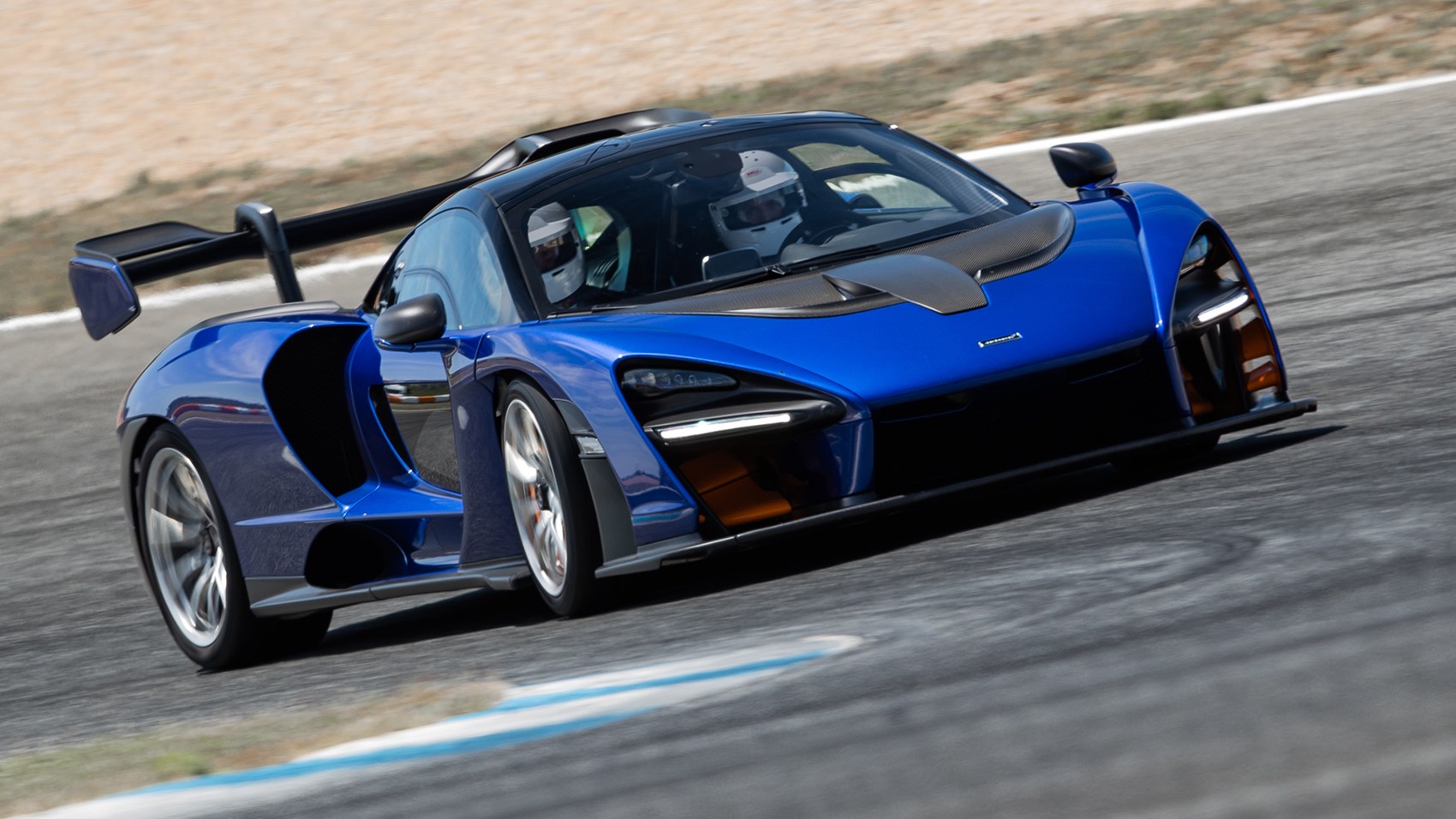
McLaren Senna: verdict
On the face of it, you might wonder quite what the point of the Senna is – why not buy a GT3 racing car and a 570S road car and enjoy the best of both worlds? But it occupies its own space, and holds its own particular appeal. It operates on a dynamic plane way above any supercar I’ve driven, but feels more nuanced than a full-on racing car.
And being able to drive out of the pitlane, turn left out of the gates and head out on the road would be an absurd, special adventure. A car that’s faster and more high-tech than a top-line GT3 car that can also tootle to the shops and back on demand is quite an engineering achievement.
Ayrton Senna’s debut win at Estoril came in a turbocharged Team Lotus 97T with a similar power output to this new McLaren hypercar. The car that bears his name doesn’t require his god-like skill to drive on the limit, but it still presents just as much a challenge for professional drivers to spar with (McLaren’s pro instructors told us they were still fully getting their heads around the Senna’s abilities as the event went on) as it does a helping hand to novices, and an addictive experience for everyone in between.
It’s uncanny that a vehicle so powerful and so fast can be so friendly to drive. One hopes that the 500 Senna owners will use their cars on track as much as possible – it’s where the car belongs.
Read more CAR McLaren reviews here